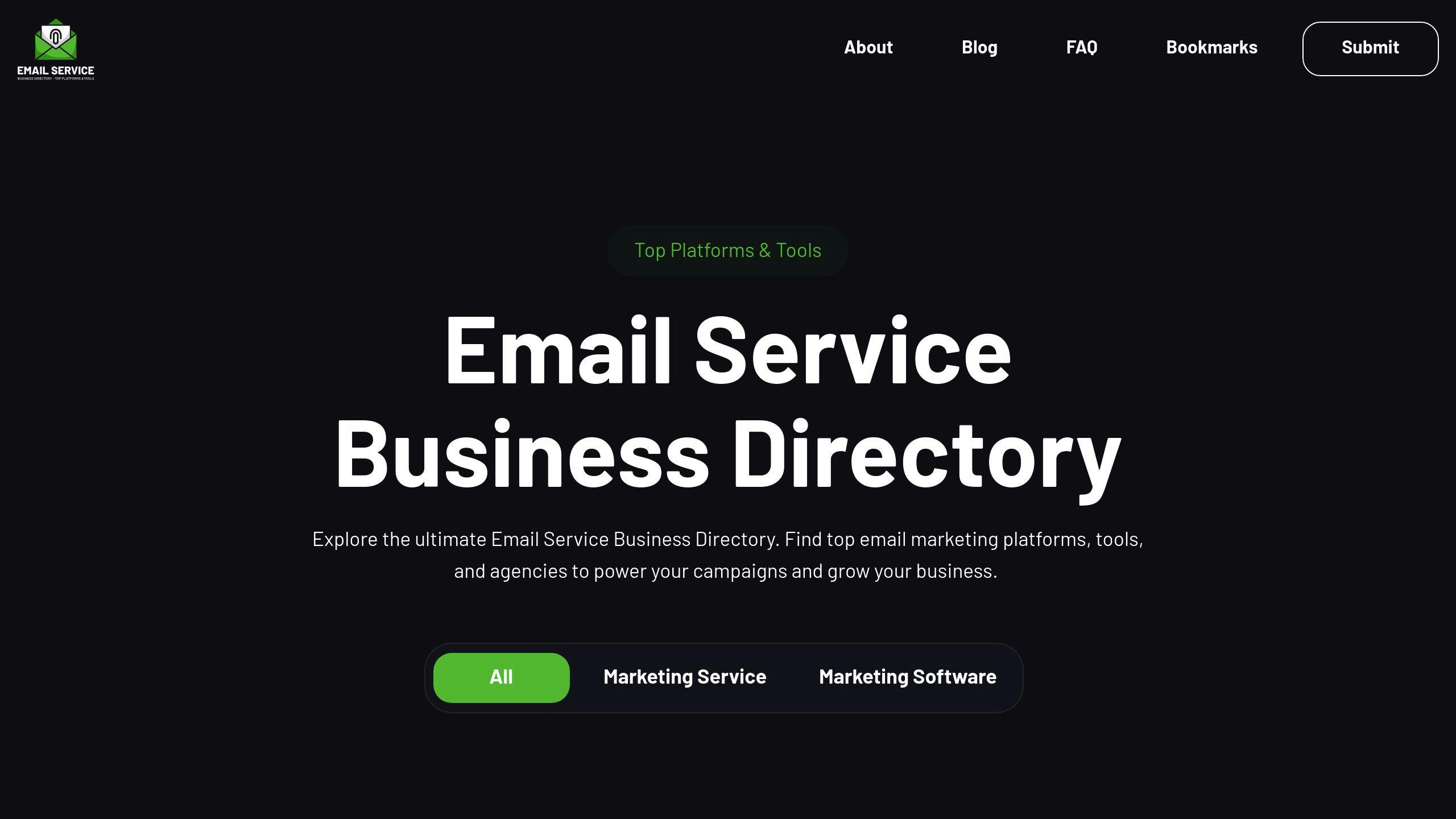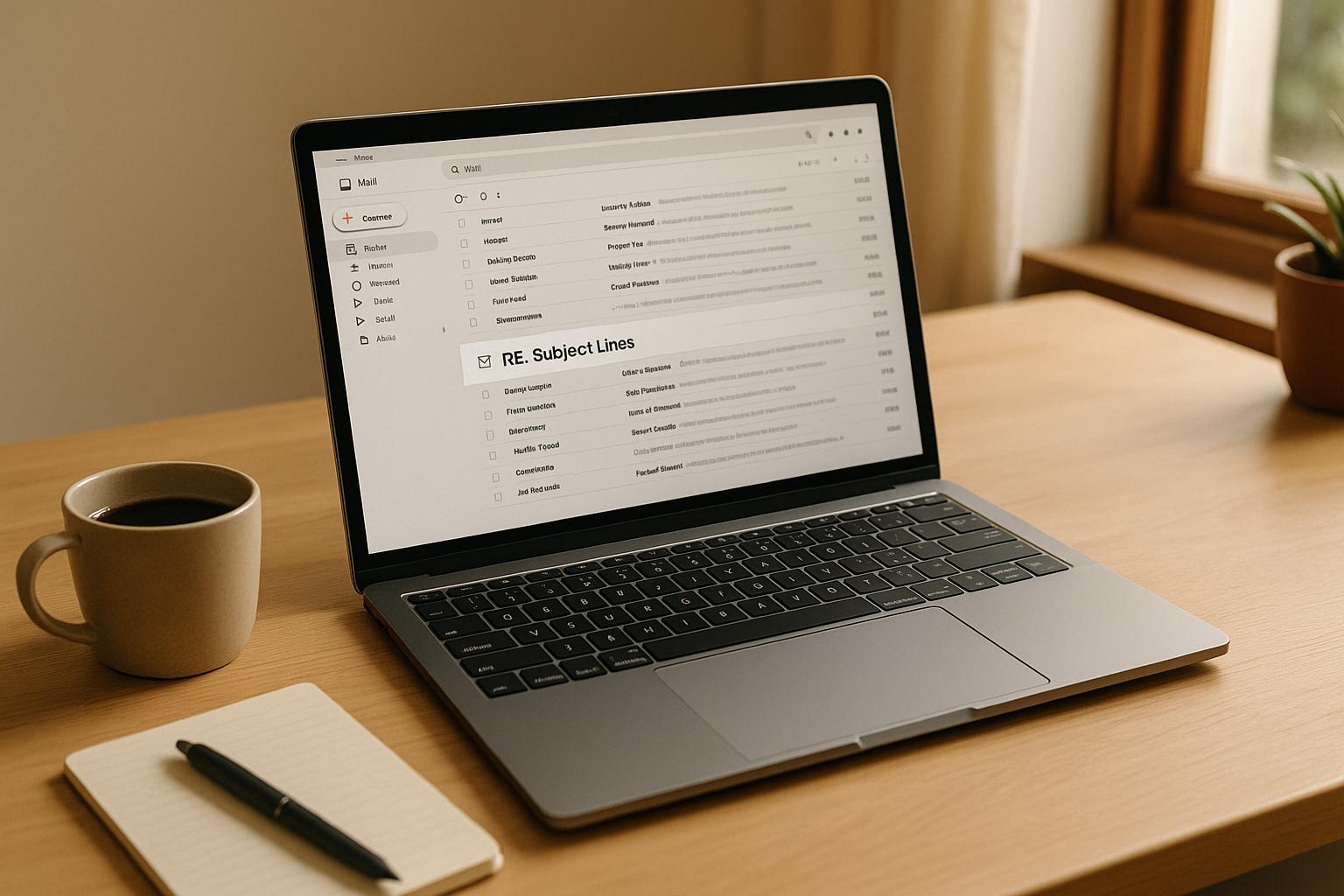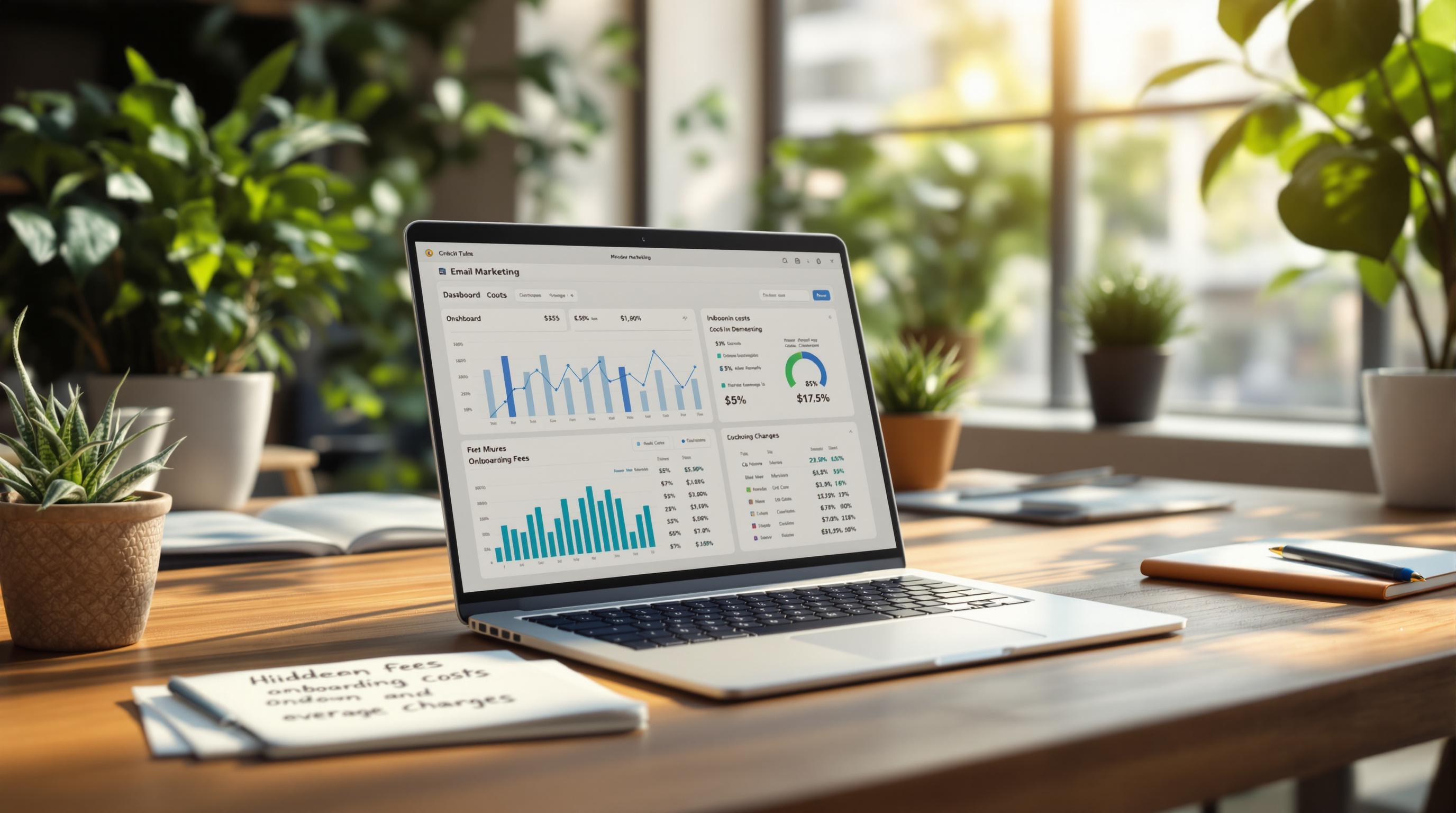Predictive email metrics help you forecast subscriber behavior using historical data and machine learning. They’re essential for creating personalized campaigns, improving engagement, and boosting ROI. Key predictive metrics include open rates, click-through rates, conversion rates, and list growth. Advanced insights, like email read time and engagement scores, provide deeper understanding of your audience. Tools like HubSpot and beehiiv offer predictive analytics features to optimize your email strategy. Focus on:
- Tracking Metrics: Open rates, conversions, and revenue per email.
- Improving Engagement: Use A/B testing and predictive data to refine content.
- Maintaining Deliverability: Monitor bounce rates and spam complaints.
- Choosing Tools: Leverage platforms with advanced analytics.
Start small, measure progress, and use predictive insights to drive better results.
Important Predictive Email Metrics to Track
Open Rates and Click-Through Rates
Open rates and click-through rates (CTR) give you a snapshot of how well your emails grab attention and drive interaction. If your open rates are high but CTRs are low, it’s a sign that your subject lines are working, but your email content might need improvement. This data helps you refine your approach.
Keep an eye on these metrics over time. Compare them to industry benchmarks and analyze trends, like the best time of day to send your emails. These patterns can help you predict how your audience will respond in the future and make smarter adjustments to your campaigns.
While these metrics are great for measuring engagement, they don’t tell the whole story. For a clearer picture of your email’s impact, you’ll need to look at conversion rates and revenue.
Conversion Rates and Revenue per Email
After nailing down engagement, it’s time to focus on how well your emails convert and generate revenue. These metrics show how effectively your campaigns are driving real results and can help you forecast future performance.
To figure out revenue per email, divide the total revenue by the number of emails sent. This simple calculation gives you a clear view of each email’s financial contribution, making it easier to predict your campaign’s return on investment (ROI).
"Predictive analytics uses historical data and machine learning to predict users' future actions and preferences. In email marketing, this means anticipating subscriber behavior, personalizing content, and using the data you've collected to increase engagement." - beehiiv Blog, 2024 [1]
List Growth and Unsubscribe Rates
Email success isn’t just about individual campaigns - it’s also about maintaining a healthy subscriber list. A growing list with low unsubscribe rates signals that your strategy is on the right track. On the other hand, sudden spikes in unsubscribes or slow list growth can point to potential problems or opportunities.
These metrics are useful for predicting things like:
- Future list growth and audience reach
- Content preferences based on why people unsubscribe
- The best frequency for sending emails
- How many people you can expect to reach in future campaigns
If unsubscribe rates are higher than expected, it might mean your content isn’t hitting the mark or your list needs cleaning up. Spotting these trends early can help you take action to retain your audience and keep your campaigns effective.
Advanced Metrics for Deeper Insights
Email Read Time and Engagement Scores
Email read time measures how long subscribers spend with your emails, giving you more detailed feedback than just open rates. It helps you understand whether readers are quickly skimming or fully engaging with your content.
Engagement scores take this a step further by analyzing behaviors like reading time, clicks, and interaction patterns. These scores can guide your email strategy. For instance, you could send more frequent updates to your most engaged subscribers, while scaling back for those less active to avoid overwhelming them.
While read time focuses on individual behavior, forwarding and sharing rates give insight into how well your content connects with a wider audience.
Forwarding and Sharing Rates
When subscribers forward or share your emails, it’s a strong sign that your content resonates enough for them to recommend it. Tracking this metric helps you pinpoint which topics or formats perform best.
Many email platforms include tools to track these behaviors, allowing you to:
- Measure organic sharing activity
- Spot trends in viral content
- Assess the overall reach of your campaigns
How to Use Predictive Email Metrics
A/B Testing to Fine-Tune Campaigns
Predictive analytics takes the guesswork out of A/B testing, turning it into a data-driven approach. By reviewing past performance data, you can make smarter choices about what to test and how to tweak those elements for better outcomes.
Start by spotting trends in your current email metrics. Focus on testing areas that predictive data highlights as having the most potential for improvement. For instance, if your data shows that emails with personalized subject lines consistently perform better than generic ones, prioritize experimenting with different personalization strategies.
When running tests, adjust only one variable at a time and ensure your sample sizes are large enough to provide reliable results. Track both short-term and long-term engagement metrics to refine your campaigns further.
While A/B testing helps optimize content and timing, don’t overlook the importance of solid deliverability to ensure your emails even make it to the inbox.
Improving Deliverability and Avoiding Bounces
Deliverability plays a crucial role in email campaign performance. Predictive metrics can help you spot potential deliverability problems before they escalate. Keep an eye on bounce rates, spam complaints, and engagement trends to protect your sender reputation.
- Bounce rates above 2% can harm your reputation - clean your email list regularly and verify subscriber information.
- Low engagement can hurt inbox placement - segment inactive users and tweak your content to re-engage them.
- Spam complaints can trigger filters - review your email frequency and content to avoid issues.
Beyond just getting emails delivered, engagement metrics provide insight into how well your content connects with your audience, giving you a chance to make meaningful improvements.
Addressing Low Engagement Rates
Predictive data lets you spot disengagement patterns early and adjust your strategy accordingly. Use these insights to identify the best times to send emails based on subscriber behavior, divide your audience into segments based on engagement levels, and tailor your content to match their preferences.
If you’re looking for tools to support these efforts, the Email Service Business Directory offers a range of email marketing platforms that integrate predictive analytics to help you implement these strategies effectively.
sbb-itb-6e7333f
Tools and Resources for Tracking Predictive Metrics
Best Email Marketing Platforms
To make the most of email marketing, you need platforms that offer advanced insights. Two standout options are HubSpot and beehiiv.
HubSpot combines CRM features with predictive tools to help you optimize campaign timing and analyze subscriber behavior. It's ideal for enterprise and B2B users who need CRM integration. On the other hand, beehiiv is known for its simple yet powerful 3D analytics, making it easy for non-technical teams to visualize engagement trends. This platform is a great choice for publishers and creators focused on understanding their audience.
While both platforms offer strong analytics, picking the right one depends on your specific needs. Tools like the Email Service Business Directory can make this process easier.
Using the Email Service Business Directory

With so many email marketing platforms out there, choosing the best fit can feel overwhelming. The Email Service Business Directory simplifies this by providing in-depth comparisons and reviews tailored to different campaign goals. It evaluates platforms based on features like machine learning tools, testing options, reporting dashboards, and segmentation capabilities. This resource helps businesses find tools that meet their campaign goals while ensuring high deliverability and engagement rates.
Email Marketing Analytics (Advanced Guide)
Conclusion and Final Thoughts
Predictive email metrics are changing the game in email marketing by helping businesses create smarter, data-driven strategies that boost engagement and retention. While traditional metrics still matter, advanced tools like engagement scoring and behavioral analysis give a clearer picture of what subscribers might do next.
If you're aiming to improve your email marketing, here are three key areas to focus on:
- Data-Driven Decisions: Use predictive analytics to spot behavior trends and fine-tune your timing [2].
- Personalized Content: Apply engagement scoring to deliver tailored content at scale [3].
- Choosing the Right Tools: Pick platforms that match your goals, using resources like the Email Service Business Directory.
When you combine these strategies with the right tools and regular tracking, your campaigns can stay impactful and ahead of the curve. Predictive engagement scoring, which forecasts future subscriber actions based on past behavior, has already shown its value in strengthening customer connections across various industries [1].
The best way to get started? Begin with small steps, measure your progress, and expand your efforts as you grow. This approach helps businesses tap into the full potential of email marketing, building stronger customer relationships and achieving measurable success.


